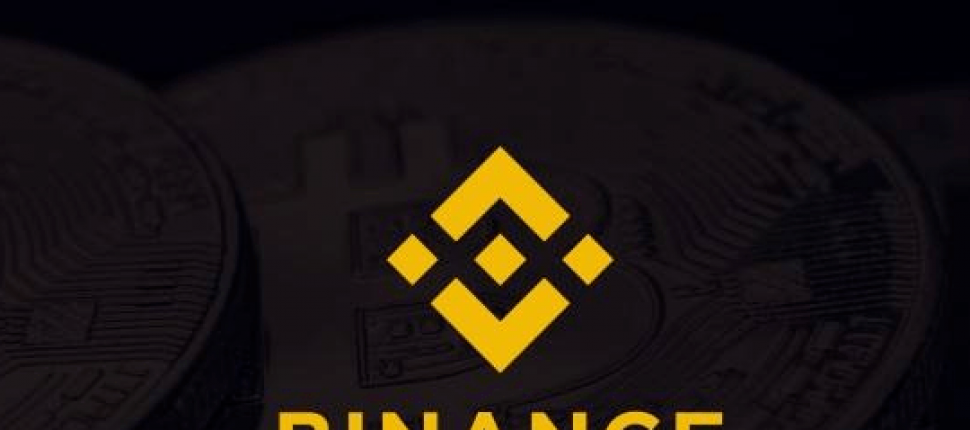- >Buying Crypto
- >Algorand Review
Algorand: Where to Buy ALGO Crypto in 2025
Algorand Pros & Cons
Pros
Strong founding team, including MIT Professor Silvio Micali. Partnered with many well-known names, including Union Square Ventures
Built on a model of pure proof-of-stake, which takes a layered approach to scalability. Can process up to 1,000 transactions per second
Earn staking rewards for participating in network governance
Cons
Proof-of-stake is still not as well understood as proof-of-work from a security perspective
A lot of competition with other blockchains focused on flexible smart contracts
There is not much liquidity for ALGO on exchanges
Best Exchanges for Buying Algorand
Algorand is available for trading on many of the largest crypto exchanges in the world, and there should be sufficient liquidity if you’d like to more in or out of this asset on one of these platforms. While this crypto asset does not have the volume of more popular coins like bitcoin and ether, tens of millions of dollars worth of ALGO are traded every day on multiple exchanges.
Like many other crypto assets, most of the volume for ALGO trading can be found on Binance and FTX.
- Great for crypto beginners
- Solid crypto/general trading platform
- Reliable company with solid trust in the community
- Fully supports credit cards for deposits and withdrawals
Algorand Ratings
Supply
- Max: 10,000,000,000
Network Speed
- High, 4.5 second block times that will be made faster through future upgrades
Disbursement
- Rating: Low
- Reason: Like many other bitcoin alternatives, Algorand has faced issues when it comes to a fair distribution of their coins. In bitcoin, fair disbursement was made possible through proof-of-work mining to distribute new coins, while many proof-of-stake-based alternatives since then have simply distributed tokens to founders and early investors to bootstrap the network. While Algorand intends to distribute their ALGO tokens as far and wide as possible, this is a difficult task, as many other projects have illustrated. This is especially true when you consider the current concentration of the ALGO supply around Algorand Inc.
Developer Engagement
- Rating: Medium
- Reason: Algorand has been able to gain a relatively large amount of developer engagement in a manner similar to other non-Bitcoin projects. In the case of Algorand, the main foundation behind the project is granting 250 million ALGO to developers who work on Algorand-related projects over a multi-year period. While this has proven to be a useful way of attracting new developers to a crypto project, it’s also a sign that Algorand is rather centralized in its current state. It would be better if these developers were working on Algorand out of their own curiosity by “scratching their own itch” because that’s generally a good sign that something of value is being generated at a fundamental level.
Liquidity
- Rating: Low
- Reason: While the ALGO token has been listed on major exchanges, it’s still not one of the major players when it comes to trading volume and liqudity. According to Cryptowatch, there is roughly $70 million worth of ALGO trading that takes place on exchanges every 24 hours. For context, bitcoin trades roughly 1000 times that amount per day. Additionally, general liquidity for ALGO is rather low, as there is only around $4 million worth of bids within 1% of the last trade price across major exchanges at the time of this writing. For bitcoin, that number is around $400 million, in addition to all of the off-chain liquidity that does not necessarily show up on exchanges.
History of Algorand
Algorand launched in 2019 and is the brainchild of MIT professor Silvio Micali. The main focus is to be a blockchain primarily intended to be used for payments, as transaction finality can be achieved in four to five seconds. This is the equivalent of more than 1,000 transactions per second.
Algorand is still a relatively new name in the cryptocurrency ecosystem, and it is mainly backed by the Algorand Foundation, which is a non-profit organization. Funding from the Algorand Foundation is used to teach new developers about the cryptocurrency network at well-known universities, including Micali’s MIT. The Algorand Foundation also sponsors hackathons on a regular basis that are able to get more developers interested in using this technology for the first time.
In 2020, the Algorand Foundation launched multiple accelerator programs in Asia and Europe. The original backing behind Algorand includes a number of prestigious investors such as Union Square Ventures. Although this project is young, it has already gained a lot of interest from the crypto ecosystem due to its technical achievements.
Advantages of Algorand
The main advantage of Algorand over other similar blockchain systems is the speed at which confirmations occur on the network. Currently, Algorand supports a capacity of more than 1,000 transactions per second, and this number is expected to increase over time. Additionally, the Algorand blockchain is intended to never split into multiple chains based on a break in consensus, which means these transactions can also be finalized much faster than what happens on other cryptocurrency networks. Much of the efficiency gains here are due to Algorand’s use of a pure proof-of-stake model.
The importance of having a high quality founder like Turing Award-winner Silvio Micali can also not be overstated. While there are many projects out there trying to do things similar to Algorand, none of them come with the level of credibility that comes with Micali, who is also a professor at MIT. While there are a large number of cryptography experts working on Algorand today, it all started with Micali.
A final advantage of Algorand is that it takes a layered approach to scaling, much like has been the plan for Bitcoin over the years. Instead of trying to stuff as much data into the base layer as possible, Algorand uses a combination of a layer-one network with a more limited scripting language with a more complex layer-two system that is better suited for for more complex smart contracts. This has long been thought to be the best way to scale cryptocurrency systems.
Disadvantages of Algorand
Like many other newer cryptocurrency networks, the advantages of Algorand also come with a large number of tradeoffs. Increasing the number of transactions that can be processed per second on the base, layer-one blockchain also increases the costs associated with being able to operate a node, which also increases the general level of centralization in the system. Additionally, the large amount of developer interest in the Algorand project as a whole is made possible through funding by the Algorand Foundation, which is another point of centralization for the project. Whenever you’re looking at the technological advantages of a crypto network, it’s important to also consider the potential downsides of those tweaks to existing systems.
There are also a large number of projects that are competing with Algorand in the area of higher-throughput, more centralized blockchain networks. While Algorand can currently process over 1,000 transactions per second, newer systems, such as Solana, are promising throughput of up to 50,000 transactions per second. Additionally, Ethereum’s transition to ETH 2.0 is expected to increase the numbers of transactions that can be processed per second to between 1,000 and 2,000. Bitcoin also has a number of different smart contract projects building on top of it on secondary layers now such as Stacks and RSK. Other competitors to Algorand in the crowded space of cryptocurrency networks focused on smart contracts include Binance Smart Chain, Tron, Cardano, and Polygon.
A final disadvantage of Algorand is that the ALGO token is not that liquid, so you may need to need to pay a bad exchange if you’re trying to move in or out of the asset in large quantities.
Algorand Frequently Asked Questions
It depends on what you mean by potential. Many would say that the metrics associated with Ethereum’s adoption and its underlying ETH cryptocurrency indicate that it has shown great potential to be a big player in the area of smart contracts going forward. However, in terms of potential for future growth, Algorand may have a better argument because its market cap is still rather low and the project as a whole is relatively new. As always, the greater the potential reward for betting on a particular crypto token, the greater the amount of risk that has been bestowed upon that cryptocurrency by the market.
While Algorand was far from the first project to launch as a proof-of-stake based blockchain, it does differentiate itself from other PoS networks already on the market such as Cardano. Algorand’s version of PoS is known as Pure Proof of Stake (PPoS). The main differentiator with PPoS is that there are extremely low requirements when it comes to staking on the network. Only 1 ALGO is required to start staking. While this helps democratize the staking process on Algorand, critics also point out that it also likely makes the network as a whole less secure.
Yes, Algorand takes a multi-layer approach to smart contracts. On the base layer, smart contracts can only be constructed in a rather simple manner, while more complex smart contracts are left to the second layer in an off-chain manner. This is an attempt to make acceptable tradeoffs when it comes to the scalability of smart contracts.
Yes. Due to Algorand’s use of pure proof-of-stake, this cryptocurrency network could be considered a “green” crypto. The cryptocurrencies that are usually referred to as wasteful and potentially harmful to the environment are those based on proof-of-work such as Bitcoin. However, the potential negative environmental impacts of proof-of-work cryptocurrencies is largely overblown.
Yes. Algorand works on a system of proof-of-stake, so you are able to earn yield on your ALGO holdings by participating in network consensus. It only takes 1 ALGO to start staking, and the current expected APR is between five and six percent.
The Algorand blockchain is a solid option for small transactions. The base layer can process more than 1,000 transactions per second, and these transactions only take a few seconds to be confirmed. Additionally, even faster and cheaper payment systems can be built on secondary layers of the Algorand network. Of course, a downside of using Algorand payments is that they have to be denominated in ALGO if you want to make the payments in a way that does not reintroduce the counterparty risk associated with the traditional financial system.

